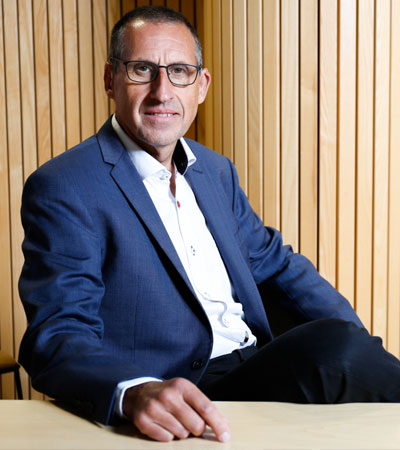Electric ladle preheating solutions leave no carbon footprint, provided the electricity they use is generated from a renewable energy source. Even when the source is a fossil-based power plant, the reduced energy consumption of an electric heater leads to better resource efficiency overall. Electric ladle heaters have the potential to cut energy use by as much as 70 percent, depending on the process in which they are used.
Ladle preheating is used first to dry out the refractory and prevent explosions in the event of any remaining water vapor being exposed to liquid metal, and second to heat up the refractory material to reduce the risk of thermal shock when it is filled with molten metal, thus preventing cracks and damage to the lining.
Olivier Tanguy explains that ladles have traditionally been preheated using open-flame gas or oil burners, but these days, he says, electrical solutions are on the rise.
Real change is happening and companies everywhere are looking to reduce their carbon footprint.
“Real change is happening and companies everywhere are looking to reduce their carbon footprint,” he says. As businesses invest in new equipment, more decision-makers than ever are seeking climate-positive long-term solutions, he adds.
NO MORE GUESSWORK
 Olivier Tanguy, Business Development Manager with Kanthal.Electric heaters do not emit any excess heat, harmful nitrous oxides or poisonous carbon monoxide. While gas burners are extremely noisy and polluting, electric solutions are quieter, safer and cleaner than any gas-driven alternative.
Olivier Tanguy, Business Development Manager with Kanthal.Electric heaters do not emit any excess heat, harmful nitrous oxides or poisonous carbon monoxide. While gas burners are extremely noisy and polluting, electric solutions are quieter, safer and cleaner than any gas-driven alternative.
They are also more precise. “Whereas gas systems blow heat against the ladle, allowing a lot of energy to escape out of the exhaust, an electric heater is a closed system,” Tanguy explains.
In other words, the heat is concentrated in the place where it is needed, making the heating process more controlled and far more uniform. Moreover, refractory lifetime is extended by as much as 20 percent, since the lining of the ladle is less likely to crack from local overheating or thermal shock.
“Whereas temperature control with a gas heater is mainly guesswork, an electric heater ensures a reliable outcome by heating the ladle to a uniform, measurable temperature,” Tanguy says.
ADAPTED FOR ALL TEMPERATURE RANGES
As to what that number is, it very much depends on the application. Whereas aluminum processing requires preheating to around 650°C(1,200°F), steel processing requires significantly higher temperatures of up to 1,400°C (2,550 °F). Bronze, zinc and copper require something between the two extremes.
While there is a common misconception that electric heaters are not equipped to deliver the higher temperatures, Kanthal’s electric heating systems can be adapted for all temperature ranges, delivering heating and preheating up to ladle temperatures of 1,500°C (2,730°F).
Safer, cleaner, more sustainable and more efficient, electric ladle preheating is the future-proof solution for aluminum and steel producers everywhere.